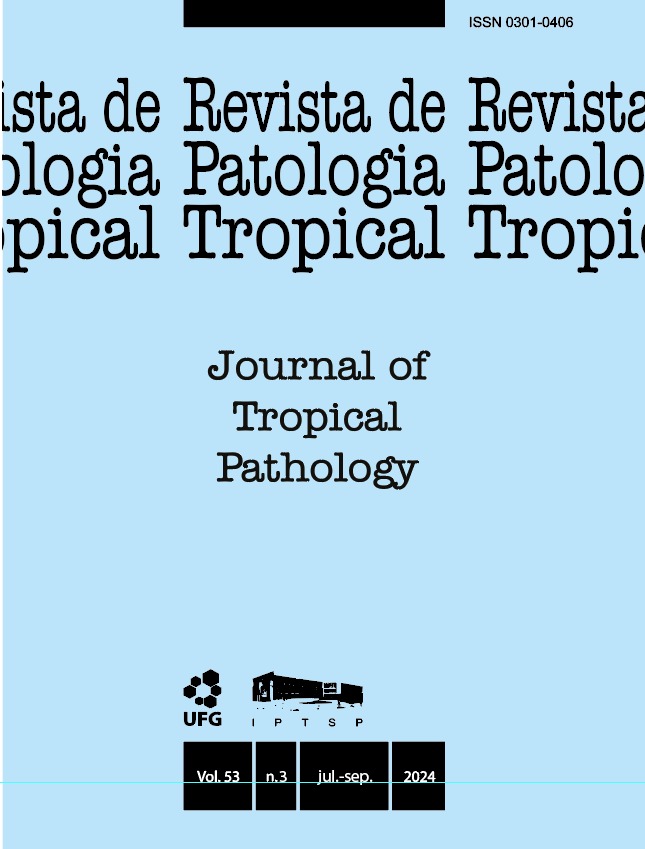Definition of parameters for mapping aedes aegypti outbreaks using drones in the municipality of Itabira, Minas Gerais, Brazil
DOI:
https://doi.org/10.5216/rpt.v53i3.79659Resumo
Dengue is a febrile disease caused by arboviruses transmitted by mosquitoes of the Aedes aegypti species, whose symptoms range from a flu-like syndrome to serious and fatal cases. The main way to combat the disease is vector population control, which has shown unsatisfactory results. To optimize vector control response capacity, the Health Department of Minas Gerais (MG) published Resolution SES/MG 9.035/2023, defining rules for the use of unmanned aerial vehicles (UAVs), known as drones, in the fight against A. aegypti. Therefore, with the aim of creating a technically viable and low-cost method for defining priority areas for intervention through UAVs, dengue cases occurring between 2018-2022 were correlated with vector density in 2022 in the municipality of Itabira/MG. Results: 1,004 confirmed cases between 2018-2022, with a correlation strength with vector density in 2022 of 76.8%, considering three strata. Statistical significance (p < 0.05) was identified in two assessments between neighborhoods with a difference in incidence equal to or greater than 64.0%. The results indicated the following descending order of priority areas for mapping using UAVs: stratum-3, stratum-1, stratum-4 and stratum-2.
KEY WORDS: Aedes; dengue; disease vector control; drones; unmanned aerial devices
Downloads
Downloads
Publicado
Como Citar
Edição
Seção
Licença
The manuscript submission must be accompanied by a letter signed by all authors stating their full name and email address, confirming that the manuscript or part of it has not been published or is under consideration for publication elsewhere, and agreeing to transfer copyright in all media and formats for Journal of Tropical Pathology.

